Toddler’s Orthotics – The Best Orthotics for Your Child!

Has your toddler been diagnosed with a foot condition such as severe flat feet and your medical professional recommends wearing orthotics but hasn’t specified which ones to get? Toddler’s orthotics are specialized inserts designed to support the natural development of children’s feet. These devices aim to correct foot alignment, improve balance, and prevent future foot issues. They are often recommended when medical professionals exhibit signs of foot problems.
As a passionate shoe fitter, I’ve seen firsthand how orthotics can support the healthy development of toddlers’ feet. These formative years, often referred to as the “golden years of treatment opportunity,” present a critical window where structural changes in the foot and lower extremity can be effectively addressed. During this period, the bones are still malleable, making it easier to correct and guide development in the right direction, which can have lasting impacts as the child grows.
Signs Your Toddler May Need Orthotics
Recognizing when your toddler might benefit from orthotics can be challenging. However, there are several signs to watch for.
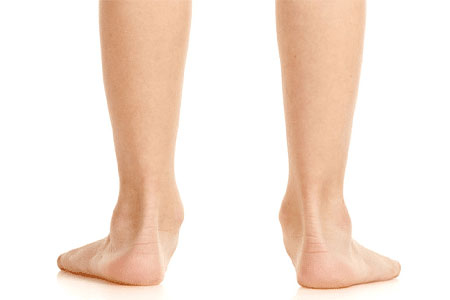
- Frequent Tripping or Falling: If your child often trips or falls, it could be due to poor foot alignment.
- Uneven Shoe Wear: Noticeable wear on one side of the shoes may indicate an imbalance.
- Unusual Walking Patterns: If your child walks on their toes or with their feet turned inwards or outwards, it might be time to consult a specialist.
My Experience Fitting Toddlers in Supportive Shoes and Orthotics
As a shoe fitter with over a decade of experience, I’m passionate about helping children find the right shoes and orthotics. While I’m not a medical professional, I work closely with physical and occupational therapists who refer families to me for expert fitting.
Children’s feet are always developing, and proper footwear can make a lasting impact on their growth. Though I don’t have a formal degree in shoe fitting, I’ve always felt a strong responsibility to ensure every child gets the best-fitting shoes for their needs.
Before and After: The Difference Made by Orthotics
Before and after images often show a marked improvement in the alignment of a child’s feet and legs when orthotics are paired with supportive shoes. These improvements are not only noticeable but also indicative of the positive impact orthotics can have on a child’s overall physical development.
The correct type of orthotics fitted in the correct type of shoes can help straighten your toddler’s feet and legs, allowing your toddler to walk and run straighter.
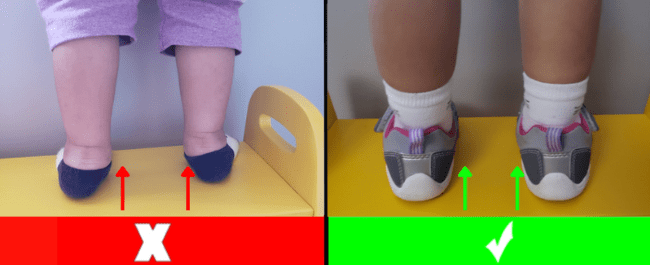
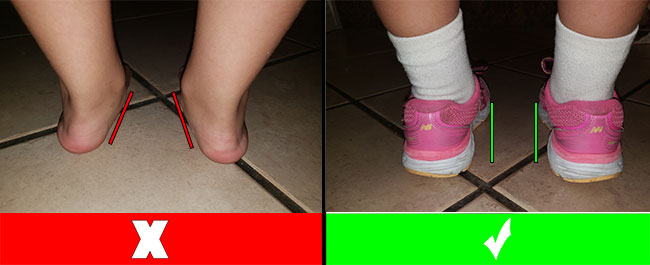
These changes are not just cosmetic; they can lead to better posture and reduced pain or discomfort as your child grows. Children who start with orthotics early in life often show improved balance and coordination, which can have a positive impact on their overall physical development.
Key Features of Pediatric Orthotics
Not all orthotics are efficient in treating your toddler’s foot conditions.
1. Comfort and Cushioning: The orthotic has a foam or a visible bump where the arch of your toddler’s foot is supposed to sit. This helps improve foot posture and reduce stress on your toddler’s feet and legs.
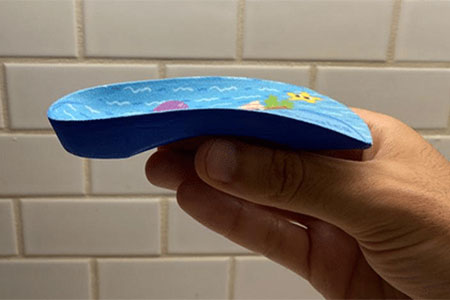
2. Ankle and Heel Support: The orthotic comes with a sturdy and supportive heel cup in the back. Certain toddlers have “weak ankles”, which means that the bone of the ankle (which is supposed to be straight), turns inwards or outwards.
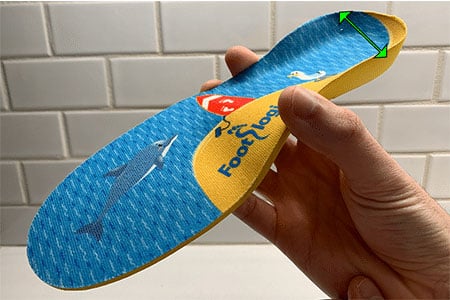
3. Breathable: The orthotic must also be breathable to prevent bacteria from forming inside the shoe.
Over-the-Counter vs. Custom Orthotics
When it comes to orthotics for toddlers, many families wonder whether over-the-counter options are a viable alternative to custom orthotics. The good news is that over-the-counter orthotics can be just as effective for most children. They are designed to support the arch and align the foot, providing a cost-effective solution that doesn’t compromise quality. These products are often readily available and can be a quick and easy solution for busy parents looking to support their child’s foot health.
Let me clarify that the use of orthotics for toddlers is a very controversial subject that is rarely agreed upon by medical practitioners. My opinion is that orthotics should only be used for toddlers when symptoms related to foot and leg function are evident, and they are experiencing foot or leg pain. Disclosure: This post may contain affiliate links, and we may earn a small commission (at no extra cost to you) if you make a purchase.
Best Toddler’s Orthotics for Better Posture and Stability
Footlogics orthotics promote proper foot alignment and balance, offering excellent arch and heel support. Their key advantage is providing support without being overly invasive, allowing your child’s foot and leg muscles to develop naturally while still getting the necessary support.
3/4 Length Footlogics Orthotic Inserts for Toddlers
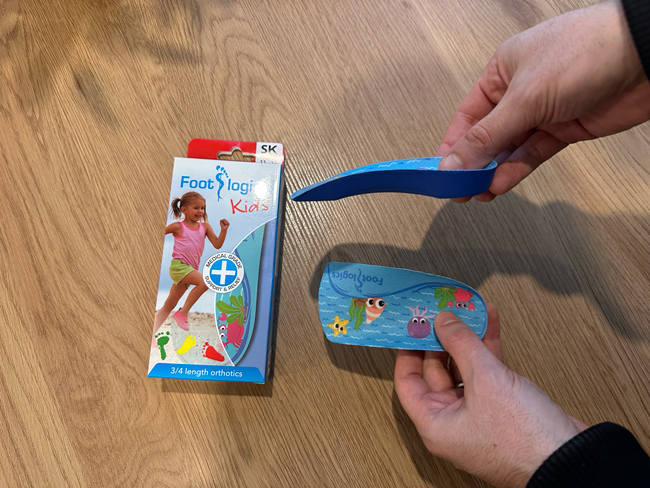
- Order the 3/4 length Footlogics orthotic inserts for toddlers on Amazon
- Fits toddler shoe size 5 through little kid shoe size 13
- 3/4 length makes it ideal to fit in most shoes
- If needed, you can easily trim them to the perfect size with a pair of scissors for a custom fit
- It’s not necessary to remove the original insoles of the shoes when fitting this orthotic
Full-Length Footlogics Orthotic Inserts for Toddlers
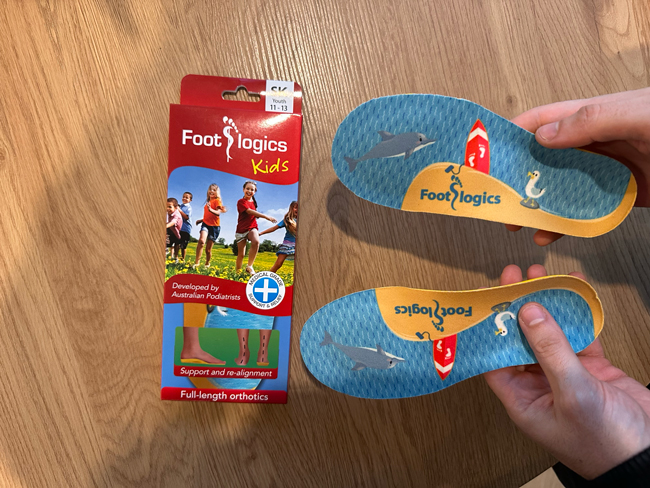
- Order the Footlogics full-length orthotic inserts on Amazon
- Fits toddler shoe size 5 up to big kid shoe size 3
- If needed, you can easily trim them to the perfect size with a pair of scissors for a custom fit
- You must remove the original insoles from your child’s shoes before placing the orthotic inside
Developed by orthopedic experts, Footlogics orthotic inserts have proven to support healthy foot development. Its arch support keeps your toddler’s feet naturally balanced, promoting a straighter walk and run. However, its effectiveness in realigning your toddler’s feet depends on their unique foot anatomy.
Full-Length vs. 3/4 Length Orthotics
Footlogics offers both full-length and 3/4 length orthotics, each serving different purposes. Full-length orthotics provide comprehensive support and are suitable for larger shoes, whereas 3/4 length orthotics are more versatile and can fit into more types of footwear.
Families Share Their Success with Footlogics Orthotics
Many families have found success in using Footlogics orthotics for their toddlers. They report improved balance and walking patterns. These positive outcomes reflect the effectiveness of orthotics in addressing foot conditions and supporting healthy development.


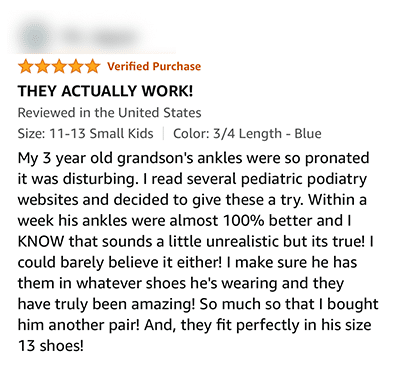
Integrating Orthotics Into Daily Life
Introducing orthotics into your toddler’s routine should be done gradually. Here are some tips to help with the transition:
- Start Slowly: Allow your toddler to wear the orthotics for short periods at first, gradually increasing the duration as they become accustomed to them.
- Monitor for Discomfort: Keep an eye out for any signs of discomfort or irritation, and consult your specialist if issues persist.
- Encourage Regular Use: Consistency is key to reaping the benefits of orthotics. Encourage your child to wear them during daily activities, especially when walking or playing.
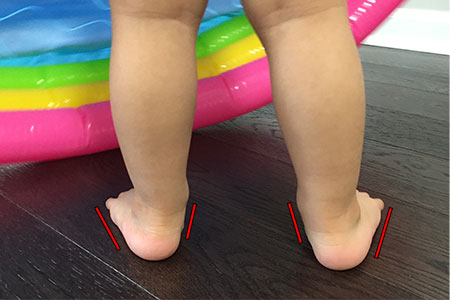
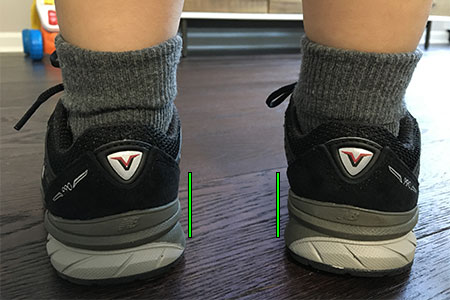
Some parents believe that simply because they found a supportive orthotic they don’t need to worry about investing in good, supportive shoes. The orthotics and shoes work together to keep your toddler’s feet and legs healthy. If you get a good supportive orthotic but it’s fitted in a pair of shoes that are not supportive or the wrong shoe size, your toddler won’t get any of the benefits that the orthotics have to offer.
The Importance of Supportive Shoes
Pairing orthotics with the right shoes is vital. Orthotics alone can provide some support, but they work best when used in conjunction with supportive footwear. Shoes should have a firm heel counter, a flexible sole, and enough room for orthotics to fit comfortably. Ensuring that the shoe fits well with the orthotic will maximize the benefits and prevent discomfort.
1. Shoe Style 990v6 by New Balance
This is the absolute best shoe to accommodate toddler’s orthotics. The robust outsole helps distribute weight evenly across the foot and reduces strain on the muscles and joints. The downside that many parents complain about is the high price tag.
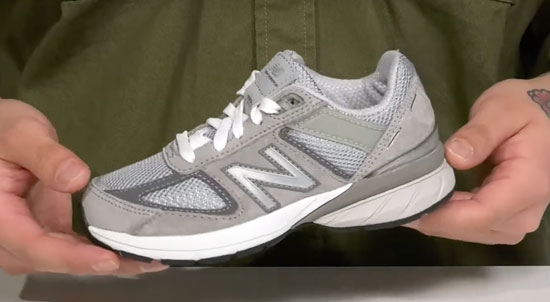
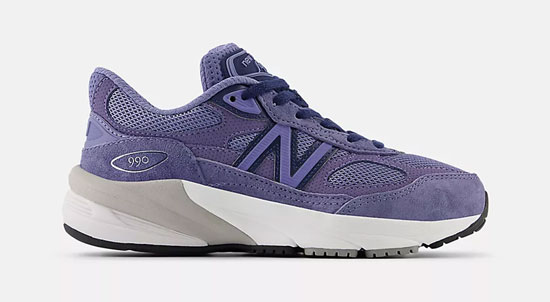

Key Features
- You can order the 990v6 with laces on the New Balance website, Amazon, or Zappos
- Available in medium, wide, and extra wide widths
- Also available in pink and navy blue
- There is also a Velcro version of these shoes available in navy blue and pink
- I suggest getting this shoe a half size larger than your toddler’s current foot size
2. Shoe Style Gabi by Memo (Orthopedic Shoe)
These orthopedic shoes are ideal to accommodate orthotics and they are specifically designed to improve foot posture and comfort. The higher price point is a common complaint parents have but the investment in orthopedic shoes is often justified by their specialized design and effectiveness in addressing flat feet.


Key Features
- You can order the shoe style Gabi by Memo on Amazon
- Fits medium and wide feet
- Also available in a Mary Jane style
- I suggest getting this shoe a half size larger than your toddler’s current foot size
3. Shoe Style Elliott by Stride Rite
These high-top booties by Stride Rite offer excellent support and a comfortable fit, making them a top choice for toddlers who wear orthotics. This shoe is affordable and despite the limited color choices, the Elliott shoes are celebrated for their supportive qualities and comfortable fit.
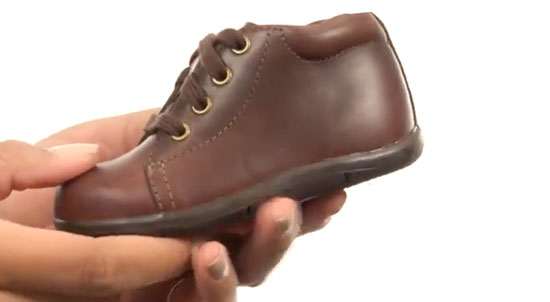
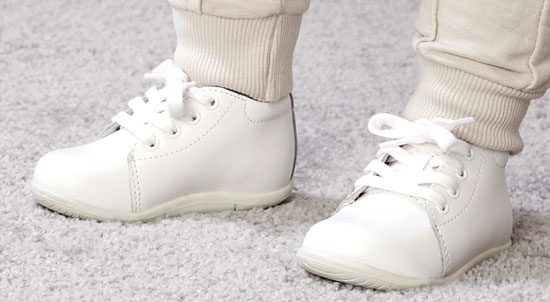
Key Features
- You can order the shoe style SRT Elliot by Stride Rite on Amazon or Zappos
- Available in medium, wide, and extra wide widths
- I suggest getting this shoe a whole size larger than your toddler’s current foot size
4. Shoe style 574 by New Balance
This New Balance shoe combines style with functionality. It offers solid support and cushioning, making it suitable for toddlers who wear orthotics inside their shoes.
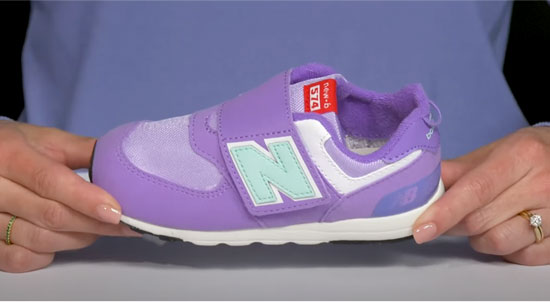
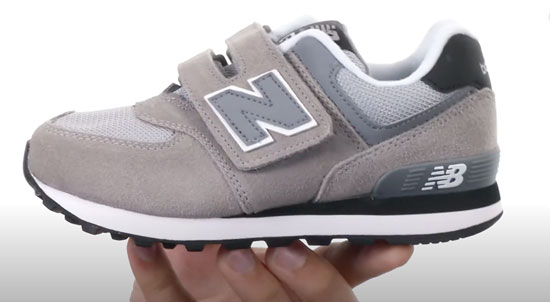
Key Features
- Order the shoe style 574 New-b V1 by New Balance on Amazon or the New Balance website
- Available in medium, wide, and extra wide widths
- I suggest getting this shoe a half size larger than your toddler’s current foot size
5. Shoe Style Tracks by Timberland
The sturdy design ensures that toddlers can enjoy outdoor activities without compromising on foot stability or comfort, but this style is slightly heavier than my other shoe recommendations.
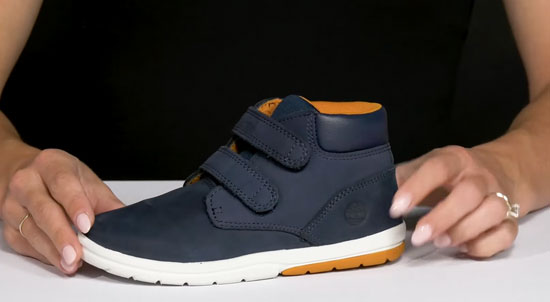

Key Features
- Order the shoe style Tracks by Timberland on Zappos or Amazon
- Fits medium and wide feet
- Water-friendly
- I suggest getting this shoe a whole size larger than your toddler’s current foot size
6. Shoe Style Fresh Foam Arishi v4 by New Balance
This is a versatile shoe that provides a soft and comfortable fit while supporting your toddler’s flat feet. Families appreciate how this shoe is offered at a very reasonable price.
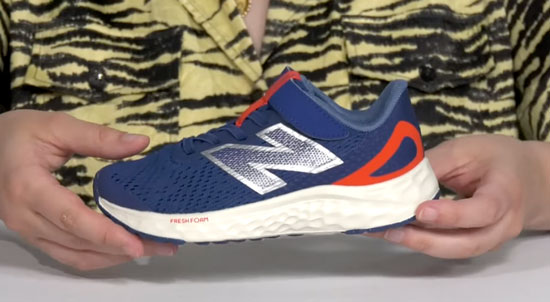
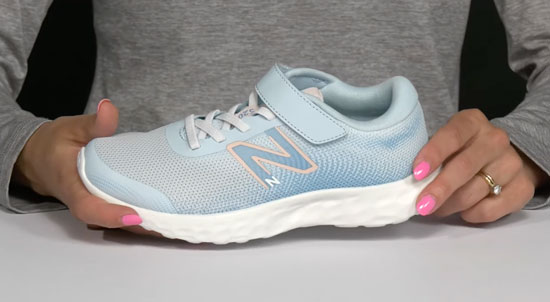
Key Features
- Order the shoe style Fresh Foam 650 by New Balance on the New Balance website or Amazon
- Available in medium, wide, and extra wide widths
- I suggest getting this shoe a whole size larger than your toddler’s current foot size
7. Shoe Style 2002 by New Balance
The 2002 model by New Balance is another great option for flat-footed toddlers with overpronation at a more affordable price point than the 990v6.


Key Features
- Order the shoe style 2002 by New Balance on the New Balance website
- Available in medium and wide widths
- I suggest getting this shoe a whole size larger than your toddler’s current foot size
Why You Should Always Remove the Original Insoles
Be sure to remove the original insoles before placing orthotics inside your toddler’s shoes. This step ensures that the orthotics fit properly and don’t raise your toddler’s feet, which could make them feel like their feet are slipping out of the shoes. Proper placement maximizes comfort and support, helping your child walk with ease.
Why Are Orthotics Important for Toddlers?
1. Promote Healthy Foot Development
During the toddler years, a child’s feet undergo significant development. Proper foot alignment is crucial for overall growth and can influence posture and walking patterns. Orthotic footwear can help guide this development and prevent long-term issues.
2. Improve Balance and Coordination
Orthotics provide the necessary support to enhance a child’s balance and coordination. This is particularly important during the early stages of learning to walk. By stabilizing the feet, orthotics can reduce the risk of falls and injuries.
3. Address Specific Foot Conditions
Certain foot conditions, such as flat feet, high arches, or in-toeing, can be effectively managed with the use of orthotics. By correcting these issues early, you can prevent more severe problems from developing as your child grows.
Will Your Toddler Have to Wear Orthotics into Adulthood?
It’s important to note that if addressed early, toddlers may not need to wear orthotics for life. While some teenagers may continue using them long-term, many children only need orthotics for a few years as their feet develop and strengthen. Early intervention can make all the difference!
By understanding the benefits and selecting the right orthotics, you can help ensure that your child grows with a strong foundation. Always consult with a healthcare professional to determine the best course of action for your child’s specific needs. With the proper support, you can set your child on a path to healthy growth and confident movement.


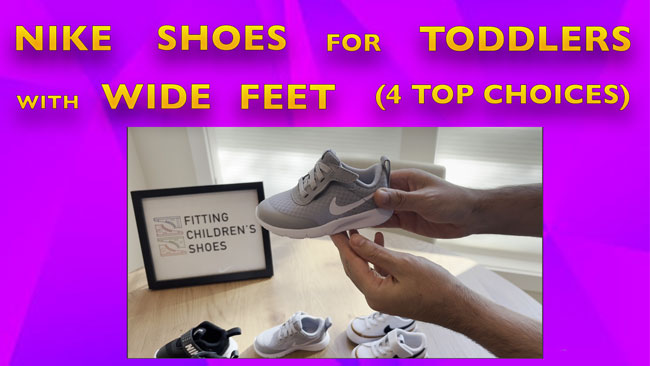
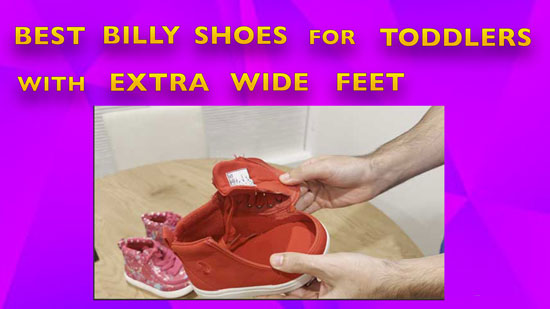
Hi, I need your advice. My boy 5 years old, has a flat feet. The arch is very low especially the right side. And has eversion of heel so become over pronation. His shoes size is EUR 30/US13. Foot length (L/R) 179/178 cm. Foot width (L/R) 68/71 cm. Pls advise me the good shoes and orthotics. Thanks a lot.
Hello Megan,
If your child already knows how to tie his shoes I will recommend that we provide him with a pair of shoes with shoelaces, since they will provide more support and stability for his feet. They will also make the orthotics fit better. If he doesn’t know or is not ready to learn how to tie his shoes please get back at me and I will provide you with a selection of shoes with velcro closure.
Here are my recommendations:
Supportive Shoes for Orthotics: Option 1
Supportive Shoes for Orthotics: Option 2
Please make sure you order the width “W”, or “XW” for the orthotic to fit inside the shoes.
Here is my recommendation for the orthotics:
Orthotic for Kids with Flat Feet and Heel Eversion
Make sure that you remove the original insoles of the shoes before placing the orthotic inside the shoes.
I hope this helps!